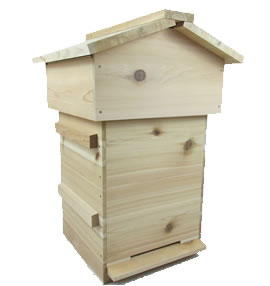How to Make a Beehive: A Step-by-Step Guide
Building a beehive is a rewarding project that allows beekeepers to create custom hives tailored to their specific needs and preferences. While there are various hive designs to choose from, the following steps outline a basic process for constructing a Langstroth-style beehive, one of the most popular hive designs used in beekeeping.
Step 1: Gather Materials and Tools
Before starting, gather the necessary materials and tools, including:
- Wood (typically pine or cedar)
- Hive boxes (deep, medium, and shallow)
- Frames and foundation
- Bottom board
- Inner and outer covers
- Hive tool
- Saw
- Hammer
- Nails or screws
- Measuring tape
- Square
- Sandpaper
- Protective gear (gloves, safety goggles)
Step 2: Cut Wood to Size
Using a saw, cut the wood into pieces according to the dimensions of the hive components. Follow the hive plans or specifications to ensure accurate sizing and proper fit.
Step 3: Assemble Hive Boxes
Assemble the hive boxes by attaching the sides, ends, and bottom boards together using nails or screws. Use a square to ensure the corners are square and the boxes are aligned correctly.
Step 4: Add Frames and Foundation
Insert frames into the hive boxes and secure them in place. Install wax foundation or comb guides into the frames to provide a starting point for bees to build honeycomb.
Step 5: Attach Bottom Board and Covers
Attach the bottom board to the bottom of the hive stack, ensuring it is level and secure. Place the inner cover on top of the uppermost hive box, followed by the outer cover to protect the hive from the elements.
Step 6: Sand and Finish
Once assembled, sand any rough edges or surfaces to smooth them out. Apply a protective finish, such as paint or wood stain, to seal the wood and protect it from weathering and decay.
Step 7: Install Beehive in Location
Choose a suitable location for the beehive, preferably in a sunny, sheltered area with easy access for beekeepers. Install the hive on a sturdy stand or platform to elevate it off the ground and provide stability.
Conclusion
Building a beehive is a fulfilling and practical endeavor that allows beekeepers to create customized hives for their beekeeping operation. By following these steps and investing time and effort into craftsmanship, beekeepers can construct durable, functional hives that provide a safe and comfortable home for honeybee colonies.
Remember to prioritize the health and well-being of the bees when designing and building hives, ensuring they have adequate space, ventilation, and protection from the elements.



